Manganese Transport Protein Vital to Lyme Disease Bacteria
|
By LabMedica International staff writers Posted on 26 Feb 2009 |
Microbiologists studying the bacterium Borrelia burgdorfei (Bb), the causative agent of Lyme disease, have reported finding a unique manganese transport protein that might prove to be the pathogen's Achilles heel.
To establish infection, Bb must acquire essential nutrients, including transition metals such as manganese, from its mammalian and tick hosts. As no metal transporter had been identified in Bb, investigators from the University of Texas Southwestern Medical Center (Dallas, USA) set out to find one.
The protein they found, BmtA, lacked homology to any known manganese transporter, so the investigators speculated that BmtA might comprise a novel mechanism for manganese acquisition by a bacterial pathogen. To study how BmtA works the investigators generated a number of mutant strains of Bb that lacked the gene that encodes for it.
They reported in the February 13, 2009, online edition of the journal the Proceedings of the [U.S.] National Academy of Sciences (PNAS) that the mutants grew slightly slower than wild-type Bb in vitro. BmtA mutants were sensitive to the chelating actions of EDTA (ethylenediaminetetraacetic acid), suggesting a role for BmtA in metal utilization. Intracellular accumulation of manganese was substantially diminished in the mutants, indicating that the protein was operative in manganese uptake.
BmtA was found to be essential to the infectious life cycle of Bb in ticks and mammals. In addition, the mutants were sensitive to treatment with t-butyl hydroperoxide, implying that BmtA, and thus manganese, was important to Bb for detoxifying reactive oxygen species, including those potentially liberated by immune effector cells during the innate immune response.
"When you try to grow the mutant strain in a mouse, however, it cannot grow,” said senior author Dr. Michael Norgard, professor of microbiology at the University of Texas Southwestern Medical Center. "The fact that the bacterium without this particular manganese transporter cannot grow in a mouse raises important questions about what aspects of physiology and metabolism contribute to the pathogenicity of the organism. I really think that there is also something to the notion that manganese may regulate the expression of other virulence factors. It could be that manganese has more of an indirect effect, but more research is needed to determine what must happen for B. burgdorfei to become virulent.”
"We believe our findings provide a foundation for further defining metal homeostasis in this human pathogen and may lead to new strategies for thwarting Lyme disease,” said Dr. Norgard.
Related Links:
University of Texas Southwestern Medical Center
To establish infection, Bb must acquire essential nutrients, including transition metals such as manganese, from its mammalian and tick hosts. As no metal transporter had been identified in Bb, investigators from the University of Texas Southwestern Medical Center (Dallas, USA) set out to find one.
The protein they found, BmtA, lacked homology to any known manganese transporter, so the investigators speculated that BmtA might comprise a novel mechanism for manganese acquisition by a bacterial pathogen. To study how BmtA works the investigators generated a number of mutant strains of Bb that lacked the gene that encodes for it.
They reported in the February 13, 2009, online edition of the journal the Proceedings of the [U.S.] National Academy of Sciences (PNAS) that the mutants grew slightly slower than wild-type Bb in vitro. BmtA mutants were sensitive to the chelating actions of EDTA (ethylenediaminetetraacetic acid), suggesting a role for BmtA in metal utilization. Intracellular accumulation of manganese was substantially diminished in the mutants, indicating that the protein was operative in manganese uptake.
BmtA was found to be essential to the infectious life cycle of Bb in ticks and mammals. In addition, the mutants were sensitive to treatment with t-butyl hydroperoxide, implying that BmtA, and thus manganese, was important to Bb for detoxifying reactive oxygen species, including those potentially liberated by immune effector cells during the innate immune response.
"When you try to grow the mutant strain in a mouse, however, it cannot grow,” said senior author Dr. Michael Norgard, professor of microbiology at the University of Texas Southwestern Medical Center. "The fact that the bacterium without this particular manganese transporter cannot grow in a mouse raises important questions about what aspects of physiology and metabolism contribute to the pathogenicity of the organism. I really think that there is also something to the notion that manganese may regulate the expression of other virulence factors. It could be that manganese has more of an indirect effect, but more research is needed to determine what must happen for B. burgdorfei to become virulent.”
"We believe our findings provide a foundation for further defining metal homeostasis in this human pathogen and may lead to new strategies for thwarting Lyme disease,” said Dr. Norgard.
Related Links:
University of Texas Southwestern Medical Center
Latest BioResearch News
- Genome Analysis Predicts Likelihood of Neurodisability in Oxygen-Deprived Newborns
- Gene Panel Predicts Disease Progession for Patients with B-cell Lymphoma
- New Method Simplifies Preparation of Tumor Genomic DNA Libraries
- New Tool Developed for Diagnosis of Chronic HBV Infection
- Panel of Genetic Loci Accurately Predicts Risk of Developing Gout
- Disrupted TGFB Signaling Linked to Increased Cancer-Related Bacteria
- Gene Fusion Protein Proposed as Prostate Cancer Biomarker
- NIV Test to Diagnose and Monitor Vascular Complications in Diabetes
- Semen Exosome MicroRNA Proves Biomarker for Prostate Cancer
- Genetic Loci Link Plasma Lipid Levels to CVD Risk
- Newly Identified Gene Network Aids in Early Diagnosis of Autism Spectrum Disorder
- Link Confirmed between Living in Poverty and Developing Diseases
- Genomic Study Identifies Kidney Disease Loci in Type I Diabetes Patients
- Liquid Biopsy More Effective for Analyzing Tumor Drug Resistance Mutations
- New Liquid Biopsy Assay Reveals Host-Pathogen Interactions
- Method Developed for Enriching Trophoblast Population in Samples
Channels
Clinical Chemistry
view channel
New ADLM Guidance Provides Expert Recommendations on Clinical Testing For Respiratory Viral Infections
Respiratory tract infections, predominantly caused by viral pathogens, are a common reason for healthcare visits. Accurate and swift diagnosis of these infections is essential for optimal patient management.... Read more
3D Printed Point-Of-Care Mass Spectrometer Outperforms State-Of-The-Art Models
Mass spectrometry is a precise technique for identifying the chemical components of a sample and has significant potential for monitoring chronic illness health states, such as measuring hormone levels... Read more.jpg)
POC Biomedical Test Spins Water Droplet Using Sound Waves for Cancer Detection
Exosomes, tiny cellular bioparticles carrying a specific set of proteins, lipids, and genetic materials, play a crucial role in cell communication and hold promise for non-invasive diagnostics.... Read more
Highly Reliable Cell-Based Assay Enables Accurate Diagnosis of Endocrine Diseases
The conventional methods for measuring free cortisol, the body's stress hormone, from blood or saliva are quite demanding and require sample processing. The most common method, therefore, involves collecting... Read moreMolecular Diagnostics
view channel
Advanced Liquid Biopsy Technology Detects Cancer Earlier Than Conventional Methods
Liquid biopsy technology has yet to fully deliver on its significant potential. Traditional methods have focused on a narrow range of cancer-associated mutations that are often present in such low quantities... Read more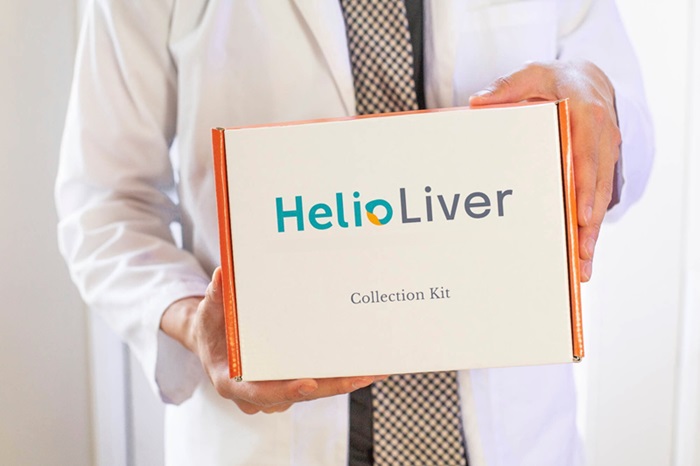
Blood-Based Test Outperforms Ultrasound in Early Liver Cancer Detection
Patients with liver cirrhosis and chronic hepatitis B are at a higher risk for developing hepatocellular carcinoma (HCC), the most prevalent type of liver cancer. The American Association for the Study... Read more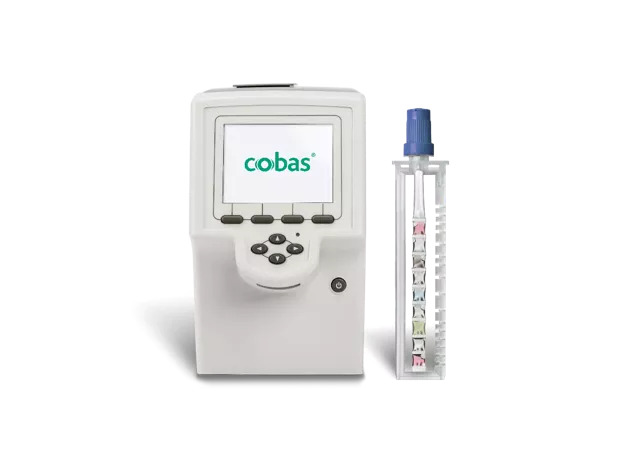
Four-In-One Molecular Test Detects and Differentiates Among Most Prevalent Respiratory Viruses in 20 Minutes
The U.S. Centers for Disease Control and Prevention (CDC) has reported that respiratory diseases in the United States reached high levels during the recent autumn and winter seasons, with SARS-CoV-2 leading... Read more.jpeg)
First-Line PSA Testing More Cost-Effective Than First-Line MRI for Prostate Cancer Screening
Current prostate cancer (PCa) screening protocols typically begin with prostate-specific antigen (PSA) testing, which, if elevated, may lead to further assessment using multiparametric magnetic resonance... Read moreHematology
view channel
Next Generation Instrument Screens for Hemoglobin Disorders in Newborns
Hemoglobinopathies, the most widespread inherited conditions globally, affect about 7% of the population as carriers, with 2.7% of newborns being born with these conditions. The spectrum of clinical manifestations... Read more
First 4-in-1 Nucleic Acid Test for Arbovirus Screening to Reduce Risk of Transfusion-Transmitted Infections
Arboviruses represent an emerging global health threat, exacerbated by climate change and increased international travel that is facilitating their spread across new regions. Chikungunya, dengue, West... Read more
POC Finger-Prick Blood Test Determines Risk of Neutropenic Sepsis in Patients Undergoing Chemotherapy
Neutropenia, a decrease in neutrophils (a type of white blood cell crucial for fighting infections), is a frequent side effect of certain cancer treatments. This condition elevates the risk of infections,... Read more
First Affordable and Rapid Test for Beta Thalassemia Demonstrates 99% Diagnostic Accuracy
Hemoglobin disorders rank as some of the most prevalent monogenic diseases globally. Among various hemoglobin disorders, beta thalassemia, a hereditary blood disorder, affects about 1.5% of the world's... Read moreImmunology
view channel.jpg)
AI Tool Predicts Cancer Patients’ Response to Immunotherapy
Immune checkpoint inhibitors are a form of immunotherapy drug that enables immune cells to target and destroy cancer cells. At present, the Food and Drug Administration has approved two predictive biomarkers... Read more
Molecular Profiling Improves Diagnosis for Children with High Risk Cancers
Cancer remains the leading cause of disease-related death among children in most developed nations, and approximately one-fourth of these patients are diagnosed with aggressive, high-risk, or relapsed... Read moreMicrobiology
view channel
Rapid UTI Test Cuts Detection Time from 3 days to 45 Minutes
Antimicrobial Resistance (AMR), also known as antibiotic resistance or superbugs, is a silent but growing pandemic where bacteria have become resistant to lifesaving antibiotics due to decades of overuse and misuse.... Read more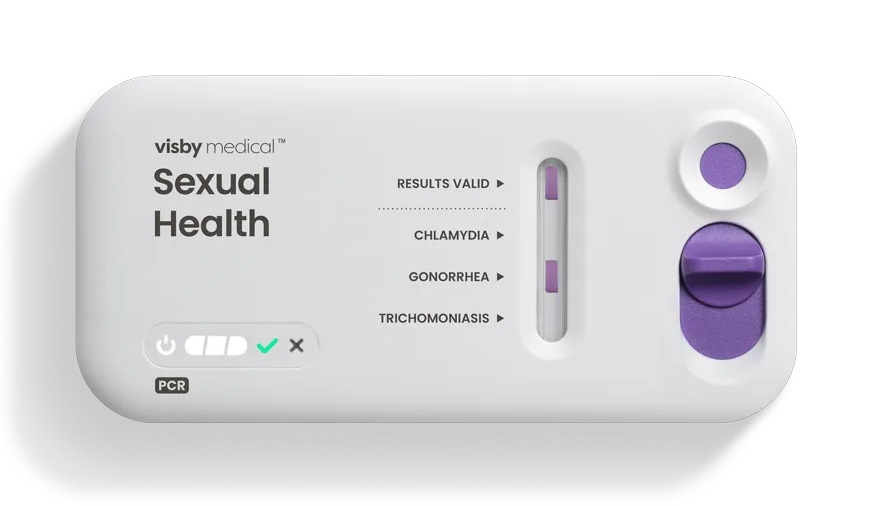
POC STI Test Shortens Time from ED Arrival to Test Results
In a 2024 sexually transmitted infections (STIs) surveillance report by the World Health Organization (WHO), over 2.5 million cases were recorded, alongside a rise in the inappropriate use of antibiotics... Read more
Integrated Solution Ushers New Era of Automated Tuberculosis Testing
Tuberculosis (TB) is responsible for 1.3 million deaths every year, positioning it as one of the top killers globally due to a single infectious agent. In 2022, around 10.6 million people were diagnosed... Read more
Automated Sepsis Test System Enables Rapid Diagnosis for Patients with Severe Bloodstream Infections
Sepsis affects up to 50 million people globally each year, with bacteraemia, formerly known as blood poisoning, being a major cause. In the United States alone, approximately two million individuals are... Read morePathology
view channel
New Technique Reveals Earliest Signs of Genetic Mutations
Mutations are alterations in the molecular "letters" that constitute the DNA code, which serves as the blueprint for all living cells. While some of these changes may be inconsequential, others can lead... Read more
New WHO Reporting System for Lung Cytopathology to Enhance Diagnostic Accuracy
Lung cancer continues to be the most common cause of cancer-related deaths worldwide and ranks as the second most frequently diagnosed cancer in both men and women. The role of lung cytopathology, which... Read more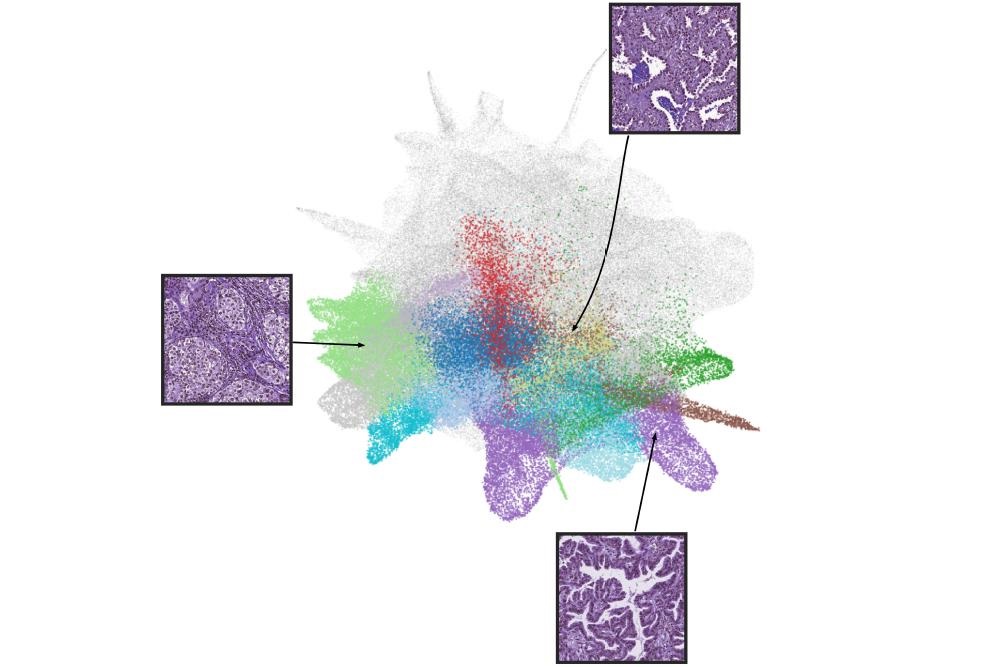
Self-Taught AI Tool Diagnoses and Predicts Severity of Common Lung Cancer
A computer program powered by artificial intelligence (AI) and trained on nearly half a million tissue images can effectively diagnose cases of adenocarcinoma, the most prevalent type of lung cancer.... Read more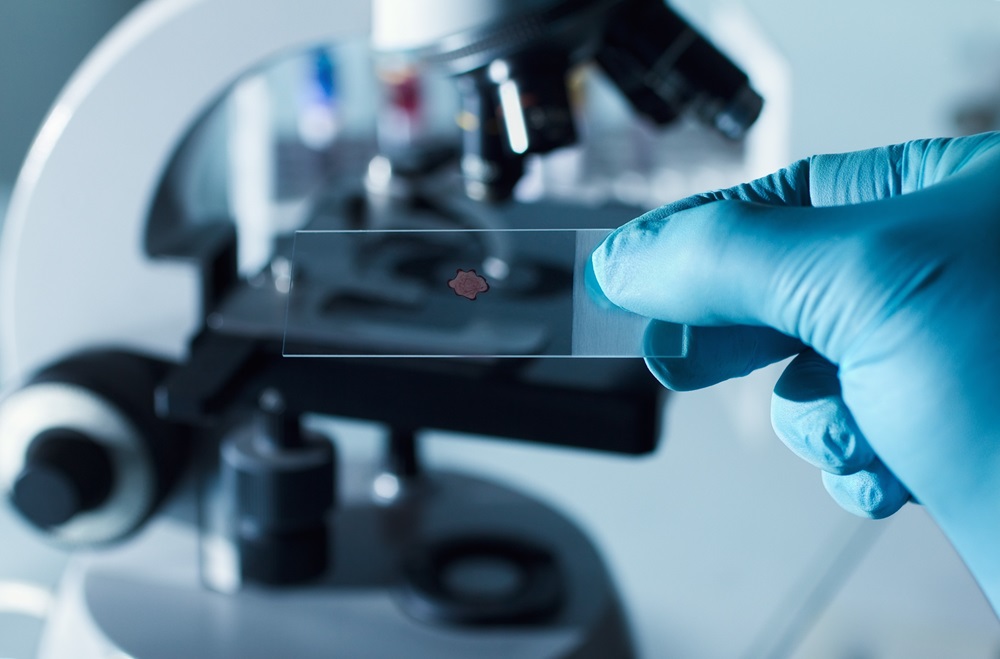
Novel AI-Powered Method for Tissue Analysis Improves Understanding of Disease Pathology
Scientists at Brown University (Providence, RI, USA) and the University of Michigan (Ann Arbor, MI, USA) have created a groundbreaking computational technique to examine complex tissue data, potentially... Read moreTechnology
view channel
Microneedle Patch Detects Skin Cancer Early
Wearable bioelectronics has emerged as a significant innovation in healthcare, especially in the field of biosensing, providing a new method to monitor individual health for both diagnostic and therapeutic purposes.... Read more
New Diagnostic System Achieves PCR Testing Accuracy
While PCR tests are the gold standard of accuracy for virology testing, they come with limitations such as complexity, the need for skilled lab operators, and longer result times. They also require complex... Read moreIndustry
view channel
Roche and Hitachi High-Tech Extend 46-Year Partnership for Breakthroughs in Diagnostic Testing
Roche (Basel, Switzerland) and Hitachi High-Tech (Tokyo, Japan) have renewed their collaboration agreement, committing to a further 10 years of partnership. This extension brings together their long-standing... Read more
Danaher and Johns Hopkins University Collaborate to Improve Neurological Diagnosis
Unlike severe traumatic brain injury (TBI), mild TBI often does not show clear correlations with abnormalities detected through head computed tomography (CT) scans. Consequently, there is a pressing need... Read more
Beckman Coulter and MeMed Expand Host Immune Response Diagnostics Partnership
Beckman Coulter Diagnostics (Brea, CA, USA) and MeMed BV (Haifa, Israel) have expanded their host immune response diagnostics partnership. Beckman Coulter is now an authorized distributor of the MeMed... Read more_1.jpg)












.jpg)


